
Last week, as the world geared up to remember Michael Jackson on his seventh death anniversary, a deluge of negative publicity hit regarding allegations of “disturbing” child porn that was supposedly uncovered during the 2003 raid of Neverland, conducted prior to Jackson’s 2004 indictment on charges of molesting a minor. The highly publicized trial in 2005 resulted in Jackson’s acquittal on all fourteen counts. The problem is that the police documents in question and the list of items seized from Neverland are not “new” or “recently unearthed” documents, as some media outlets have mistakenly claimed in an effort to bolster salacious headlines.
These were all items that were entered in court back in 2005 ― items that were well known to both the prosecution and defense and were presented before both Judge Melville and the jury. None of the items seized from Neverland fit the legal definition of child pornography, and in fact many of the items that are currently creating the most media hysteria were not pornographic at all. They were legal art books; a few of them containing some examples of adult erotica, but again, these were not titles that could be in any way deemed as pornographic or even obscene. This isn’t to say that Jackson didn’t own any pornography at all. The truth was that a sizable amount of adult heterosexual pornography had been confiscated in the raid, but Jackson was a grown man and this type of pornography is not illegal to own. In the absence of any hardcore “smoking gun” evidence against Jackson, the prosecution tried desperately to make a case for several legal art books which Jackson owned as part of an extensive library, one that contained over ten thousand titles on art and photography (subjects that were of interest to him as inspiration for his own lyrics and films). These art books, as they were written up and described in the original police reports, were clearly stated as not being pornographic in nature but as items that could “possibly” be used as part of a “grooming” process (however, it is important to note that this was not a claim the prosecution was able to successfully prove in court). Secondly, it has been confirmed via a statement issued by the Santa Barbara County Sheriff’s Department that several pages of the document ― which originated with the publication Radar Online-appeared to have been falsified, with images that were never part of the original documents, claiming those images “appeared to have been taken from internet sources.” Since this story spread like proverbial wildfire through the tabloid media ― and even to legit mainstream media who apparently never bothered to fact check either the origin or contents of these documents ― we really must pause to consider how the media operates in spreading such hoax stories on celebrities. We also must ask some hard questions about why better laws are not in place to protect deceased persons-famous or not-from this kind of libel.
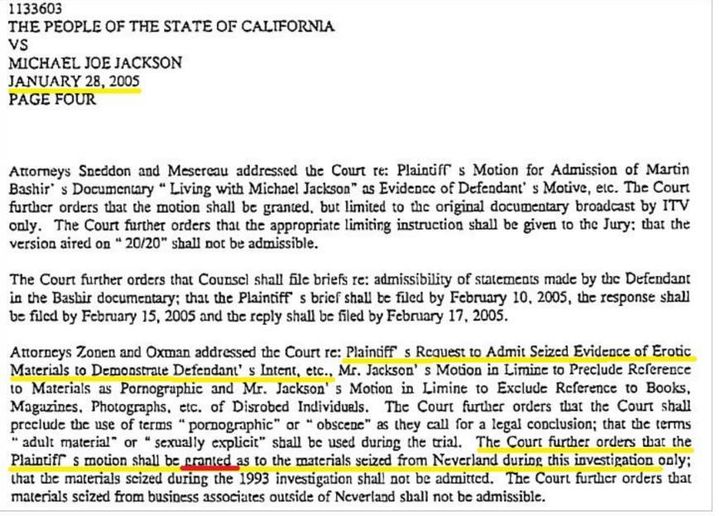
But first, let’s start by busting some of the distorted myths and outright lies that are circulating currently. I have been a dedicated Michael Jackson researcher for seven years. I have thoroughly studied the ins and outs of the 2005 case brought against him as well as the 1993 Jordan Chandler settlement.
The first thing we must address is that the information and descriptions in these reports are NOT new or “recently unearthed” reports ― this is all information that both the prosecution and defense were well aware of in 2004 when the indictment and grand jury process began. In fact, a lot of the current information being touted now was leaked then and circulated in the press after the grand jury hearings, prompting a statement to the media from Jackson’s attorney, which was signed off not only by Mesereau but also the prosecution and Judge Melville, fully acknowledging that no child pornography had been found. This was followed up by an official statement from Jackson himself, in which he specifically addressed the information that had been leaked to the media from the grand jury proceedings. It is worth keeping in mind that the grand jury hearings are a process in which the prosecution is able to present their case in its entirety without the benefit of cross examination, and includes the process of discovery whereby all potential evidentiary items are presented and discussed.

Eventually, many of these books were discarded as inadmissible evidence because they were commercially available art books that anyone can purchase legally. Of the titles that were entered as admissible evidence, it was not because they were pornographic but, rather, because the prosecution felt that they might potentially bolster an argument that Jackson “could have” used the books as grooming material and in an attempt to prove some sort of predilection on Jackson’s part for males (since a few of the titles featured artsy photographs of nude males; however, these were generally titles that featured adult erotica of both sexes). The “sadomasochism” books were adult books featuring adult subjects ( Madonna’s “Sex,” for example, was a book that he was known to have shopped for in the early 1990s) and because none of these materials fit the legal definition of child pornography. This left the prosecution in the rather embarrassing situation of having to build a case on Jackson’s adult legal porn collection, which was-let’s just say-healthy, but not that unusual for a single guy. Let’s remember, these people invaded his private quarters, after all. The full list of Jackson’s adult porn that was confiscated in the Neverland raid has been widely available for many years, and consisted of over 1800 images of nude adult women. You can find the full list here. But essentially, this left the prosecution in the rather embarrassing position of trying to build a case of child molestation against a man for whom the only “evidence” they had was issues of Hustler, Playboy, Penthouse, Barely Legal, and the like ― along with, well, a lot of art books. The thing you have to keep in mind is that the prosecution never had one shred of what we might call “smoking gun” evidence ― the kind that usually leads to an easy, “case closed” conviction in cases like this. There were no explicit love letters written to any child, no photos of himself or children engaged in sexual acts, no video tapes of himself with children in lewd acts, no taped phone conversations, no online “sex chats” ― in other words, none of the things that can usually lead to an easy conviction in such cases. You have to remember that Jackson was under constant FBI surveillance for over ten years. The reports eventually concluded nothing to be found. A search of over sixteen computer hard drives seized in the 2003 raid revealed nothing except that he occasionally visited a few adult legal porn sites where he liked to log in as “Dr. Black” and “Marcel Jackson.” Juicy gossip fodder, yes. Illegal; no.
In the lack of any such hard evidence, the case essentially boiled down to accuser Gavin Arvizo’s word against Jackson’s. From that point forward, the only hope that district attorneys Tom Sneddon and Ron Zonen had was to construct their prosecution as a character assassination. In their desperate attempt to make “evidence” out of no evidence, the art books were argued (unsuccessfully) as books that “could” fit the definition of what a casebook pedophile would own, and the legal porn was argued to be “grooming material” (an argument that likewise did not persuade the jury, especially after Star Arvizo, brother of Gavin Arvizo, admitted under cross examination that a magazine he had earlier claimed to have been shown by Jackson was an issue that, in fact, wasn’t even published until five months after the date of the alleged incident!).
The problem is that, in the absence of any truly hardcore evidence, it becomes increasingly difficult to try to convince a jury of what someone’s “intentions” are with a particular photo or art book. You can’t second guess what is in someone’s head, or if they are using certain materials ― legal or otherwise ― for sexual gratification. That is getting into the realm of “reasonable doubt” and is not something that can be proven. The only thing a judge and jury can do is to look at a certain piece of exhibited evidence and ask: Is this pornography or is it not? And if it is pornographic, is it legal? Keep in mind that anything that isn’t, strictly speaking, child pornography cannot be held as admissible evidence because it is not criminal ― at least certainly not in the United States ― to own art books or adult legal sex books, no matter how “graphic” the imagery (much of which, also, is being grossly exaggerated in the media reports, but one thing at a time).
The original Radar Online story that ran on June 20th did, in fact, acknowledge that these reports were from 2003 and are not new information, but they slanted their story in such a way that made it seem as though this was somehow “newly leaked” information or as if this was “newly discovered” evidence that somehow ― for whatever unearthly reason ― was never brought to light during the trial. This is simply not true, as all official court documents related to the 2005 case clearly show that these items were well known to both the prosecution and defense. Many of these items were discussed and exhibited before the jury in what came to be known as the infamous “Porn Day” at trial (a day for which Jackson’s very religious mother Katherine chose to sit out). What was left out was simply because it was deemed not pornographic in nature and therefore, inadmissible evidence. Let’s not forget, Michael Jackson was subjected to one of the most overzealous cases of prosecution that an individual could be put through. He had a district attorney who had made it his personal life’s ambition to put him behind bars ― or drive him permanently from Santa Barbara County, which he eventually succeeded in doing. This was a prosecution effort that combed the globe in search of “victims,” evidence, and any witnesses willing to come forth, regardless of credibility, and that spent millions in taxpayer dollars in the process. Granted, Sneddon and Zonen may have had their moments of ineptitude, but one thing they could never be accused of was being unthorough or of committing a half-assed investigation that would have left evidence of actual child pornography overlooked. Indeed, nothing in these reports was overlooked, nor was it withheld. It simply wasn’t child pornography, then or now.
This is an important fact to establish because I think the impression many are getting, from the slanted media reports, is that these items being discussed are some “shocking new bombshell” revelation that has just come to light. That simply isn’t true. This is all old news from a decade ago, and there is absolutely nothing in those reports that hasn’t already had its day in court ― that is, of the items that even made it past the discovery stage. The media is trying to slant the story that way because it makes for more salacious headlines and click bait, but if you read the fine print, most have to own up at some point that these are, in fact, old documents dating to 2003 when the discovery process for the trial was underway. So, nothing new here and nothing that the attorneys, as well as the judge and jury, were not well aware of when Jackson was tried and acquitted in 2005. So the salacious and “creepy kiddy porn” of Michael Jackson’s that is currently being touted all over the media actually consists of nothing more than a few art photography books (all of which can be legally purchased through Amazon). Some of them do fall into the category of adult erotica; however, they are not pornographic and certainly not illegal for an adult to own. They include titles by award winning photographers and authors like Anne Rice, who even wrote the introduction for one of the books (Underworld) that is currently the subject of much of the media fodder.
So the next question…why now? Well, that goes back to the close ties between Radar Online (formerly headed up by The National Enquirer’s Dylan Howard) and the attorneys of Wade Robson and Jimmy Safechuck, as well as a certain traitorous “friend” to the Jackson family, Stacy Brown, who has made a career off of peddling smut to the tabloids. Robson and Safechuck both have civil cases pending against the Michael Jackson estate, and Radar Online has become their ally and willing mouthpiece. We know from the statement released by the Santa Barbara Sheriff’s Department that the documents Radar Online obtained did not come from an official source. Here is the statement as it was released to Vanity Fair and reported in various news outlets, yet everyone who reported on this story seemed to ignore what was most damning in this statement:
Some of the documents appear to be copies of reports that were authored by Sheriff’s Office personnel as well as evidentiary photographs taken by Sheriff’s Office personnel interspersed with content that appears to be obtained off the Internet or through unknown sources. The Sheriff’s Office did not release any of the documents and/or photographs to the media. The Sheriff’s Office released all of its reports and the photographs as part of the required discovery process to the prosecution and the defense.
Many of the media outlets who copied the original story have now updated their information to include this statement. That is at least a step in the right direction, I suppose, but still doesn’t take into account their apparent willingness to run a story that has been blatantly identified by the very authorities who investigated the case as false information.
Let’s look again at that official statement released by the Santa Barbara Sheriff’s Department with the most crucial passages emphasized:
interspersed with content that appears to be obtained off the Internet or through unknown sources...
The Sheriff’s Office released all of its reports and the photographs as part of the required discovery process to the prosecution and the defense
The statement also makes it clear that someone other than an official source is responsible for feeding this information to Radar Online ― someone (or someones) who timed this malicious smear campaign just in time to coincide with the remembrances and celebrations of Jackson’s death anniversary ― a time when the emotions of his family, friends, and fans are most vulnerable.
Most damaging to the hoax perpetrators has been the statement issued from Ron Zonen himself, one of the prosecuting attorneys who certainly would have moved heaven and earth to have the “evidence” against Michael Jackson he so desperately craved. Yet even Zonen released an official statement citing the lack of child pornography found in the investigation. As reported by People:

Let’s go back to the most important statements given in Zonen’s statement:
“There was no child pornography. There were no videos involving children.”
So what, then, is all the hoopla about? You might be shocked and surprised to know! If one truly examines and dissects the materials and images being discussed, it turns out that not only are all of them from legal sources (art books and such) but that most of the more erotic images are of adults! So…what’s the deal here? It actually seems that a huge media storm is being created over Michael Jackson’s tastes in art and adult erotica. Like I said before: Gossip fodder? Yes, maybe. Evidence of criminal behavior? No.
And Radar Online (or maybe we should say whoever was responsible for “leaking” those documents to them) also purposely tampered with many of those images to make them “appear” more explicit than they actually are, as per this example. On the right is the image as Radar online posted it. On the left is the original image from the book Bidgood by James Bidgood, which is a legal book of adult male photography. On the left is the original image in Bidgood’s book. On the right is the image as it was then “doctored” in the falsified documents. As you can see, Radar Online (or someone) purposely blocked out the crotches so as to make it appear as if the young men in Bidgood’s photo were naked, when in fact they were actually clothed in shorts. But it gets even better!

A few days later, Canadian artist Jonathan Hobin, author of In The Playroom, spoke out to both the Canadian press and social media about how his work had been similarly used by Radar Online to help falsify the Jackson documents. Hobin’s “American Idol” photo, featured as part of his In The Playroom collection, was a photo featuring a JonBenet Ramsey lookalike dressed in beauty pageant regalia with a noose tied around her neck.

It was a photo that Radar Online ― as well as every other media outlet who picked up the story ― had a virtual field day with as “evidence” of Jackson’s “stockpile of “creepy” and “gory kiddie porn pictures featuring torture of children.” As it turned out, there were three major problems with this screaming headline: 1. The image is part of a legit art collection ― one that has been featured in many of the same media outlets that are now mocking Jackson, including The Huffington Post who ran a very positive feature on Hobin’s work in 2013.
But it gets even better (or worse, depending on whether you are a “glass is half-full or half-empty” kind of person). 2: In The Playroom was a book published in 2008, which means even if it is legitimate art (and it is!) it is not a book that Jackson could have possibly owned in 2003 at the time Neverland was raided. Which leads us to 3: This image, then, was never part of the original 2003 police reports, and the fact that it was at first included within the original 88-page document released by Radar Online is evidence of the kind of tampering that the Santa Barbara County Sheriff’s Department was referring to.
But the forgery doesn’t end there. The original police reports contained no images at all but only verbal descriptions of the books’ contents.
Here is the original police report of items seized at Neverland.
And here is the Radar Online version of the documents which originally ran with their 6/20 story.
This means that those images placed into the original 88-page report that Radar Online ran were either planted there by Radar Online or by the persons who submitted those documents. It appears that many of the images inserted, like Hobin’s photo among others, were not even from the titles being claimed in the report but, rather, from related titles of books Jackson did not even own. This would indicate that whoever submitted those reports conducted a sloppy Google search to acquire those images, without bothering to check if the images legitimately came from the titles in question. For example, it has since come to light that several of the more graphic photos that Radar Online claimed to have come from The Fourth Sex: Adolescent Extremes (an art book Jackson did own) were, in fact, from a list of favorite books by art photographer and “Dazed” editor Isabella Burley, who included the book on a list of her five favorite books (the images, it turns out, were taken from those other titles on her list, none of which were books that Jackson owned). You can read more about how that forgery was framed here. This would indicate that whoever was responsible for “leaking” these decade old documents to Radar Online not only were aware that no such images existed in the original documents but that, also, they were either extremely inept with use of the Google search engine or else were on a deliberate and malicious campaign to falsify those documents with purposely chosen salacious images that would then appear even more salacious when taken out of context.
Interestingly, the persons responsible for this “leak” left an intriguing clue to their identity, which many sharp-eyed Jackson fans were quick to note: Cryptic notes left on Page 25 (which also were not part of the original police report documents) stating that “Zonen is retired and will talk” and listing a current phone number for Gordon Auchincloss (Ron Zonen and Gordon Auchincloss were both prosecuting attorneys for the 2005 Jackson case). These are current notes that have obviously been recently added (Zonen is retired now, but obviously was not back in 2003-04 when these documents were first drawn up). For many Jackson fans, this lends credibility to the idea that this latest smear campaign must have originated with the attorneys of Wade Robson and Jimmy Safechuck, two young men who both have civil cases pending against the Michael Jackson estate.
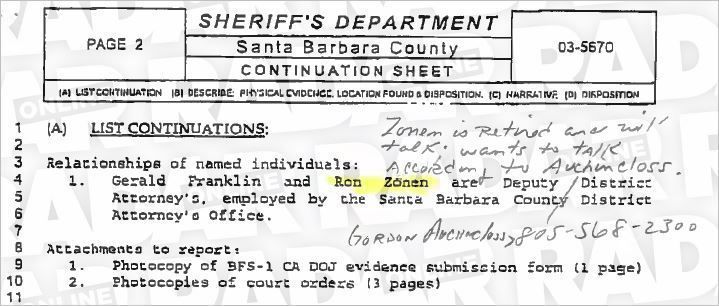
It is also worth noting that as soon as Jonathan Hobin spoke out to the media, Radar Online’s original 88-page report shrunk by twenty-seven pages to a mere 61-page-report! Clearly, haste was made to scrub the documents clean of those faked photos. And it was only within days of the mysterious vanishing act of those twenty-seven missing pages that a new “distraction” story was planted by long time Jackson family “frenemy” Stacy Brown regarding false and slanderous allegations about Jackson’s nephews. That was an allegation first raised by the prosecution when some “questionable” photos were seized of Jackson and three of his nephews ― Taj, Terryl, and TJ Jackson of the pop group 3T.
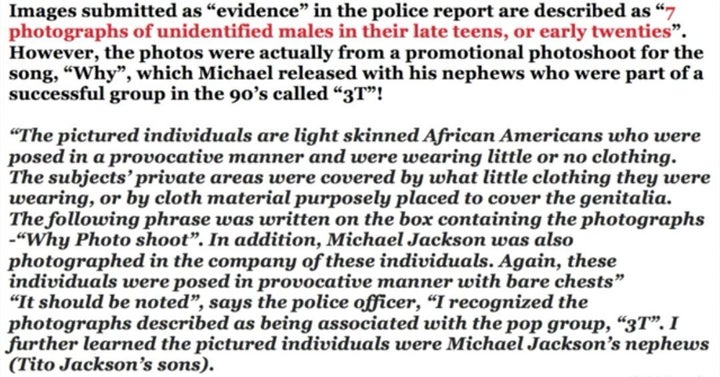
However, as it turned out, those “photos” in question were actually part of a professional album shoot for 3T’s debut album, Brotherhood, an album Michael Jackson produced. More specifically, as stated, the photos in question were part of the photo shoot for the single “Why” which featured Michael Jackson in a “guest vocalist” capacity. This was a professional photo shoot that was conducted by celebrity photographer Jonathan Exley, and according to Jackson’s makeup artist Karen Faye, who was present for the shoot, was carried out in the full company of hundreds of witnesses who were also present for the shoot. The photos in question are sexy, and undeniably, the intent was to play up the “beefcake” appeal to the group’s mostly young female fanbase. In any case, the concept for the album photo shoot was not Jackson’s. And the fact that the prosecution tried so desperately to even construe an album photo shoot as “evidence” against Jackson should tell you something. It also should tell you a lot about what is happening now, with many of these same items that were so obviously twisted out of context a decade ago now being recycled to provide fresh media fodder.
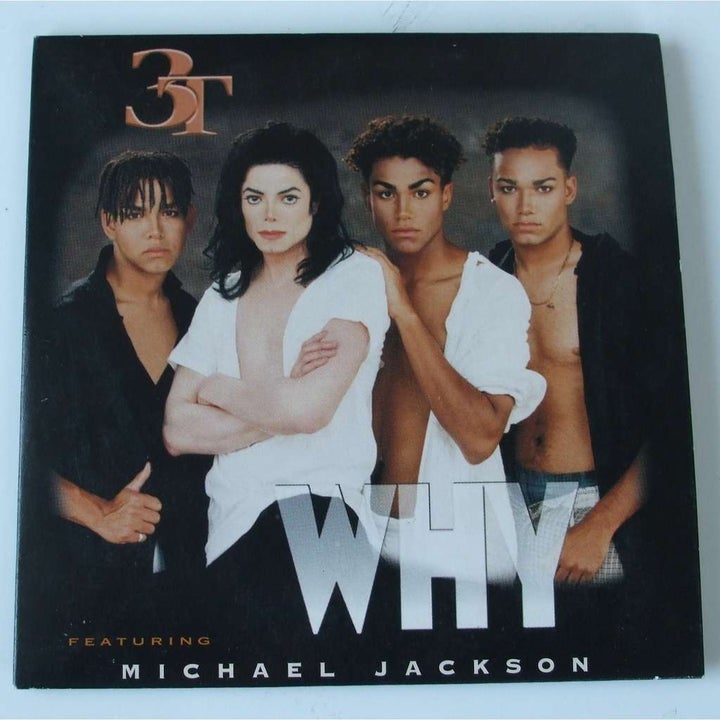
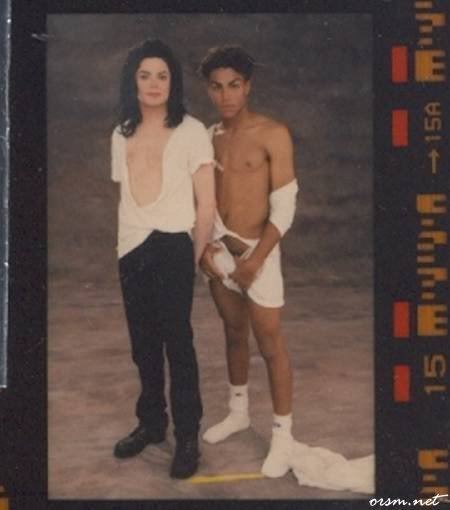
This was not the only incident in which the prosecution had attempted to misconstrue and misappropriate elements of Jackson’s art as “evidence.” On page 73 of the original Radar Online documents, a Polaroid photo depicting two boys from a Hollywood movie set is described as having the inscription “Are You Scared Yet?” and “Ha Ha!” across the bottom. A handwritten note scribbled between the lines of the official report (not present in the original report, and interestingly in what appears to be the same handwriting as the added note on Page 25 above) states that this is a “Code message equating safety to sex-frighten child and get them in bed.” Except there is a huge problem with this theory: As any diehard Jackson fan knows, “Are you scared yet?” is the famous tagline from Jackson’s 1997 film Ghosts. To attempt to construe this as being anything “other” than a harmless reference to Ghosts is pure speculation. But it is typical of the manner in which the prosecution attempted to build its case against Jackson.
However, these additional notes which were obviously added to the original reports before they were handed over to Radar Online, as were the inserted internet images and several pages of inserted articles relating the drug Percocet to sex addiction. Percocet, a prescription painkiller that gained notoriety following the recent investigation into Prince’s death, was found on the premises during the 2003 raid; however, the original documents make no such claim as attempting to link the drug to sex addiction. Curiously, many of the added pages all bear one thing in common ― the date 1/10/16 ― which would appear to date the time of the forgery to approximately five months prior to the orchestrated timing of their “release” on June 20th.
Unfortunately, the media has become an all too willing participant, creating a skewered picture in which tabloid sensationalism and spotty fact checking are allowed to stand. What’s more, it seems even the words of the actual authorities involved in the 2003-2005 case against Jackson are being ignored beneath an onslaught of “click bait” headlines and grossly exaggerated reporting. Some unscrupulous reporters have even gone so far as to suggest Jackson could have molested his own children ― an utterly absurd and ridiculous claim that has no basis in actual fact, and what’s more, is a particularly cruel and malicious slander against a man for whom his children have never expressed anything other than loving adoration. It is also an inexcusable exercise in emotional cruelty towards Jackson’s children, one of whom is still a minor child and one who has already attempted suicide due to her emotionally fragile state since her father’s passing. I find it even more disturbing that no one has thought to raise the question of ethical media or moral responsibility in all of this. To accuse someone of the possession of child pornography is to accuse someone of a criminal offense ― one that, if the accused person were alive, would be an accusation worthy of a criminal conviction and the permanent label of a sex offender. But a living person can at least take action against such media libel. They can sue for defamation. They can refute the claims. They can defend themselves. The dead have no such redress, and there is something inherently wrong with the idea of bringing such serious accusations against a man who is not here to defend himself-one who had his day in court eleven years ago, and what’s worse, to attempt to retry him in the court of public opinion based on the same circumstantial “evidence” with which the prosecution tried-and failed-to convict him back in 2005.
Where does the insanity end?
Seven years ago, we lost an amazing artist, man, and humanitarian. Recently, in the wake of the tragic shooting in Orlando, people gathered en masse for a candlelight vigil and sang Jackson’s “Heal The World.” From Ferguson, Missouri and Black Lives Matter to recent events in Paris and Orlando, Jackson’s music remains our call to awakening, reminding us of the need to be brought together as a global family. No doubt, with even more recent tragic events that have ignited our nation’s racial divide this week, people will once again turn to Jackson’s music, as they always have, for its power to heal and unite.
Frankly, if the world spent a lot more time listening to the words Michael Jackson wrote, rather than obsessing over what he had in his bedroom, we would be the better off. Jackson’s personal life has already been well dissected. He was put through a grueling and publicly humiliating trial that left nothing to the imagination-his inner sanctity completely ransacked, his most private possessions put up for public inspection; even his own body violated.
Charles Thomson’s excellent 2013 article “One Of The Most Shameful Episodes In Journalistic History,” is a harrowing account of that trial’s media coverage and the toll it took on Jackson. Sadly, nothing has changed. My point is that there is nothing new here to see. All of this “evidence” was hashed out in court a decade ago. So why is Radar Online so gleefully jumping on this fabricated smear campaign, regurgitating decades old information for which Michael Jackson has long been tried for, and acquitted? Why the need to bait a gullible public into believing that a list of items that was reviewed and dismissed as “evidence” twelve years ago is somehow front page burning news in 2016?
Strangely, perhaps, the first thing I thought of when this story hit was the recently renewed controversy over the Confederate flag. President Obama said that the Confederate flag needs to be retired permanently to a museum, where it can be remembered and viewed as a part of history, but should not be flown as an act of defiance for an ideal that no longer exists. I feel the same way about all of this regurgitated information from Michael Jackson’s trial. Those documents (the real ones, that is) have resided in the Santa Barbara County records’ department for over a decade. They are a part of history, but no longer relevant. The trial ended in acquittal on all fourteen counts on June 13th, 2005, and Michael Jackson died on June 25th, 2009.
But just as there are some individuals who will never accept that the Civil War ended in 1865, so, too, is a faction who will never accept that Michael Jackson was fully exonerated by a court of law in 2005. To this end, they will continue to lie, to rehash and sensationalize old stories, to distort truth and yes, even to fabricate new “evidence” where none exists. I can only see this as a thinly veiled attempt to keep an old battle going that has already long been fought ― and won.
If you read this and agree that we need better laws to protect the deceased against this kind of slander, please sign this petition for the Anti-Defamation Legacy Law Advocates. It is an initiative that, if passed into law, will enable the heirs of deceased persons the same laws and protection against libel in the media as living persons currently have.
UPDATE 7/13/16: Since this article was first posted, many have been asking about the exact titles of the books in question. As I mentioned in the comments below, I have been doing an ongoing series on the contents of the original 2004 police documents of the items seized from Neverland, and all of the titles are listed and described in the original police report linked to above. But to give an “at glance” summation of the books in question, here is a list of the art books that were seized from Neverland back in 2003. These are all legal titles; as I mentioned before. All with the exception of two are available on Amazon; one that is not is nevertheless available at Cornell University Library.All are cataloged in the Library of Congress. None fit the legal definition of pornography, much less child pornography. While some of the titles do contain nudity, they are nevertheless works that would qualify as art rather than as obscene or pornographic. A few of the titles, at best, seem to qualify as adult erotica photography; at least one (The Art of Dave Nestler: Wicked Intentions) appears to be a book of softcore bondage (adult females). Of all the below titles, Simen Johan’s Room To Play has probably been most responsible for many of the more salacious media headlines, as Johan’s style (like that of Jonathan Hobin) often features photographs of children in what appear to be extreme or neglectful conditions. The “morphing” photographs in Johan’s book-where children’s faces appeared to be superimposed over adult bodies (and vice versa)-are clearly part of an artistic statement about the loss of childhood and what happens when children are forced too soon into the turmoil and pain of adulthood-a subject that Jackson spoke of, and sang about, quite often as a result of his own traumatic childhood. With songs like the gothic “Little Susie,” in which a little girl is murdered”and “Do You Know Where Your Children Are?” in which he sang about the plight of childhood runaways to “Hollywood Nights” which is a tale of a teenage girl who sells herself to make it into the movies, it was clear that Jackson deeply identified with these darker aspects of childhood-it was this pain and darkness that also inspired his vision for a better world in songs like “Heal The World.”
Underworld by Kelly Klein (this was the title with the introduction from author Anne Rice)

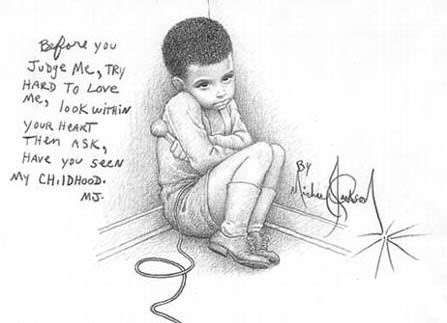
Sexual Study of a Man by Larry Stevens (not on Amazon, but available in Cornell University Library!).
So now that you have the list, let’s address what these titles actually meant in terms of a prosecution attempting to build a case. Remember, I had stated earlier that a hefty amount of adult legal, heterosexual pornography had also been confiscated-some of which did become admissible evidence in court-but the above art books, in particular, were isolated out of a library of thousands of titles (Jackson, always an avid reader, was once said to have owned an estimated ten thousand books) and for only one reason: Either because they featured nudity (which could potentially be part of a grooming process, according to the prosecution) or because they possibly could be argued to show a predilection for males, which they believed would make the testimony of their witness more credible. Jackson was truly in a no-win situation-his straight porn and erotica was argued by the prosecution as “grooming material” while any books featuring male nudity (actually only a very small percentage of the titles he owned as compared to his vast collection of straight porn) were argued to be somehow indicative of his tastes (as if being gay in and of itself would automatically qualify one as a pedophile-but this was exactly the argument the prosecution was trying to make!).
This might give you some idea of just why the People Vs. Jackson trial in 2005 was indeed so convoluted. Here was a case built on no hardcore evidence whatsoever, in which even the prosecution had been forced to admit that no child pornography had ever been found, and which seemed to be founded solely on the word of a family who had abruptly only decided that Jackson had molested their son after having received their walking papers from Neverland (the Arvizo family had been guests on the property while Gavin recovered from cancer, but soon developed a sense of entitlement according to many witnesses, running up expensive tabs on Jackson’s credit cards and vandalizing the property). The accusers, however, could provide no actual evidence of wrongdoing; later, the raid of Neverland produced no actual evidence, either. But that did not stop the prosecution from confiscating anything and everything that they thought could possibly be used against him. In this goal, they failed miserably-but it certainly wasn’t for lack of effort.
Although many fans had issues with the recent Jackson biography The Genius of Michael Jackson by Steve Knopper, Knopper did provide this very enlightening statement about the Jackson trial. It may be worth remembering that Knopper, a past contributing editor for Rolling Stone, did not go into his project as a “fan,” per se, but as a neutral journalist with an interest in Jackson’s story Like many such journalists, his stance on Jackson’s guilt or innocence has been mostly neutral but even an impartial writer like Knopper could not ignore the confusing spectacle that the prosecution made of Jackson’s private life:
The prosecution also played up the sexually explicit websites, briefcases full of nudie magazines, and centerfold cutouts...[B]ut the strategy backfired. It made Michael Jackson seem like a heterosexual male-Knopper 290-291
This was exactly what I meant above when I said this was a trial that left literally nothing to imagination. The jury in 2005 had every opportunity to see what Jackson possessed, as well as what he did not. People may form their own conclusions about his tastes in art, or even if they are prudent enough, his tastes in adult erotica. But let’s keep something in perspective: What was the man put on trial for? His tastes in art and erotica, his character, or to determine beyond a reasonable doubt whether a crime had been committed?
The campaign to “re-try” Michael Jackson in the court of public opinion is obviously, as I said before, one that has been quite carefully orchestrated as well as quite deliberately and maliciously planned. But the degree to which this particular lie was perpetuated is beyond reprehensible, and should serve as a wake-up call to media everywhere that fact checking must go before sensationalism.
. ,
